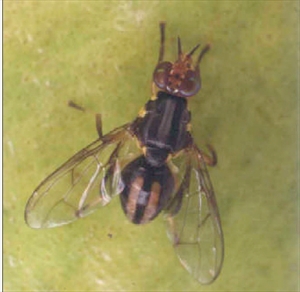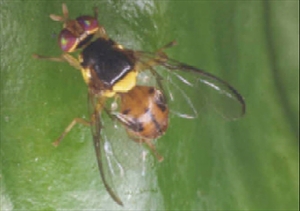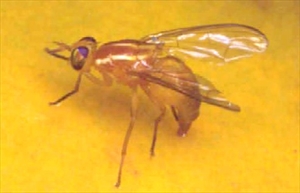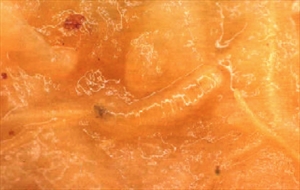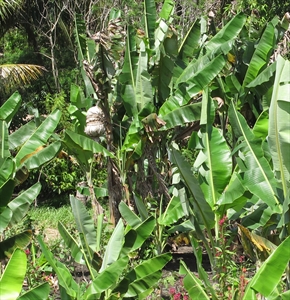- Bactrocera kirki - abiu, avocado, guava, mango, noni, Malay apple, and more; Bactrocera facialis - wide, on 29 families of vegetables/fruit crops (notably, chilli, capsicum, guava); Bactrocera xanthodes - abiu, avocado, breadfruit, jackfruit, papaya, soursop, and more.
- Females need protein before they can lay viable eggs.
- Cultural control: growing vegetables out of season; bag fruit with paper or leaves; collect fallen fruit and destroy; harvest early (papaya); some non-hosts, e.g., some chilli varieties and pineapple in Fiji.
- Chemical control: use a commercial protein bait spray, e.g. MPPIL, Royal Tongalure or Bactrogel.
